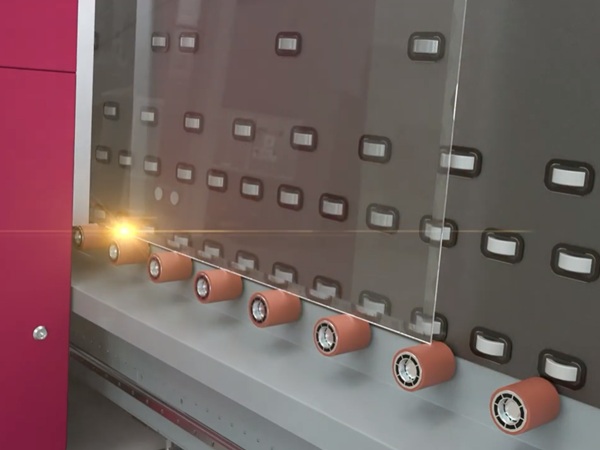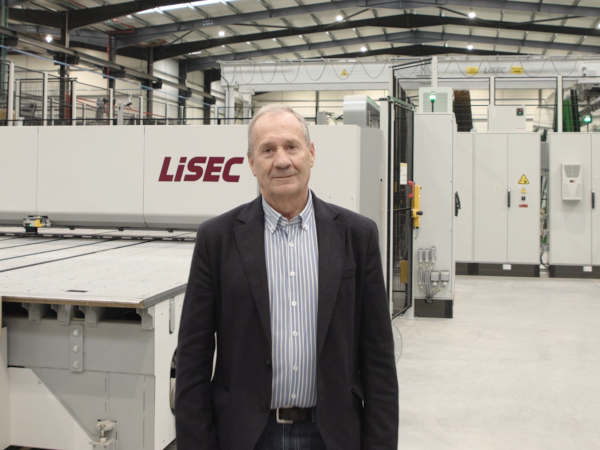Date: 20 December 2012
Especially in solar glass production, glass sheets are frequently separated by cords when unloaded and stored, to facilitate their separation when they are reintegrated into the production process. The newly developed GEL-ZS is the perfect solution to unload glass sheets for intermediate storage in series production.
.jpg)
Cord insert, V-shaped in 2 to 6 lines
GEL-ZS is designed to insert cords in between glass sheets, leaving an air gap of approximately 1 mm. This makes it possible to easily separate even large-sized glass sheets, and quickly reintegrate them into the production process. What makes this system stand out, besides the fact that it has a very short cycle time of just 8 seconds, is the forced guidance of cords and use of continuous cords.
Forced guidance ensures that the cords are positioned as defined and are tightly stretched. The cord will never hang loosely.
Continuous cords offer the advantage that they can be easily removed with an extraction device while glass sheets are unloaded from the storage rack. This ensures a clean work area and enables the automatic unloading of glass sheets from glass storage racks without having to remove cord waste manually.
Forced guidance of the cords and the very short distance the glass is transferred minimise cycle times.
The process at a glance
The vertical glass unloading station GEL-ZS transfers cut glass sheets to a movable glass storage rack with minimal movement. The pivoting mechanism with a built in suction cup unit ensures that glass sheets are transferred to the storage rack with high precision, and ensures a smooth production flow. The cord is inserted in a V-shape in several lanes. Depending on the glass length, two to six lanes are inserted. Forced guidance of the cord ensures that inserting the cord is a smooth process.
.jpg)
GEL-ZS is ideally suited for the unloading and intermediate storage of series glass. Its space-saving design and short cycle times make the innovative machine the perfect alternative to conventional unloading and intermediate storage systems.










Add new comment